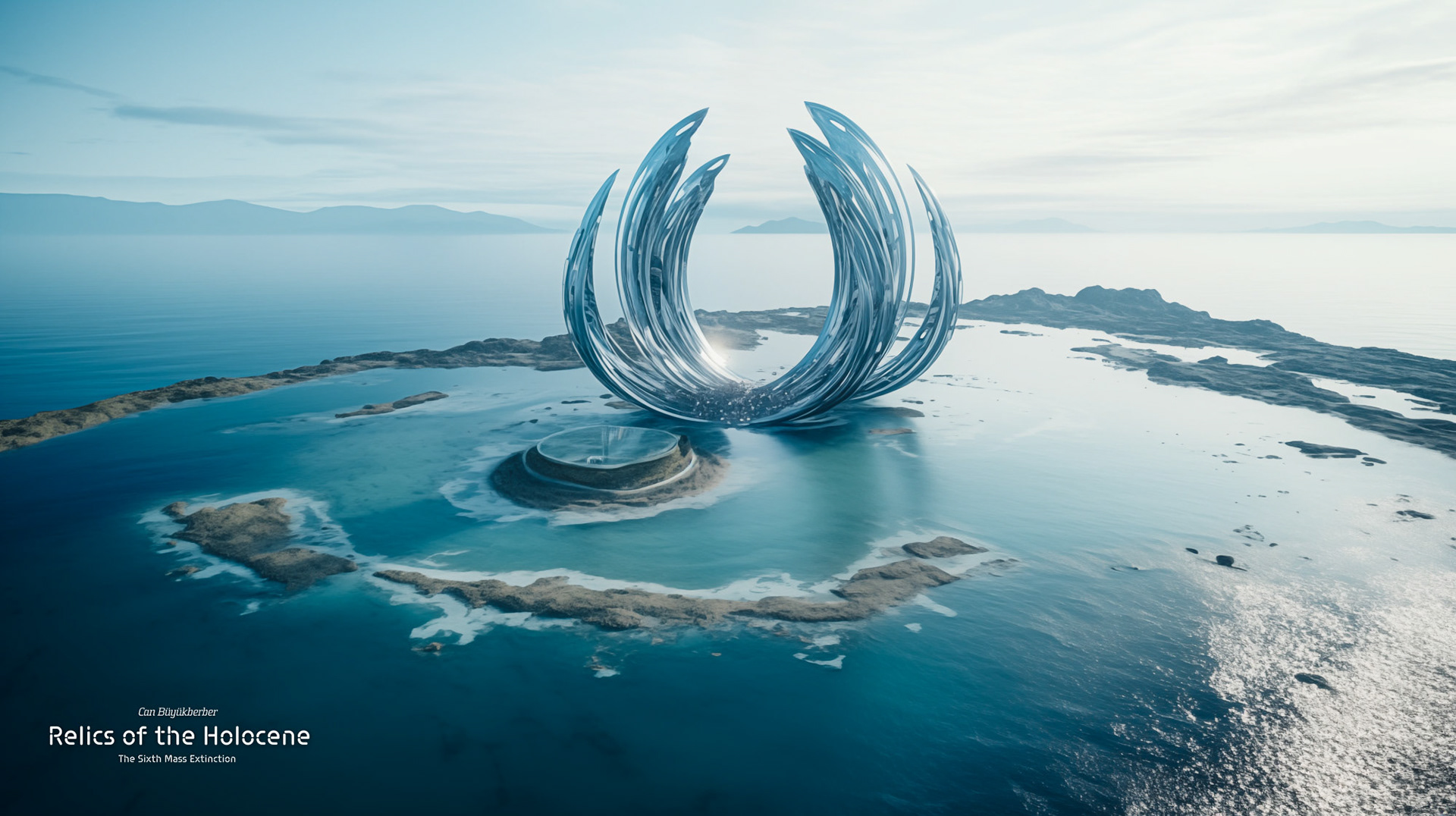
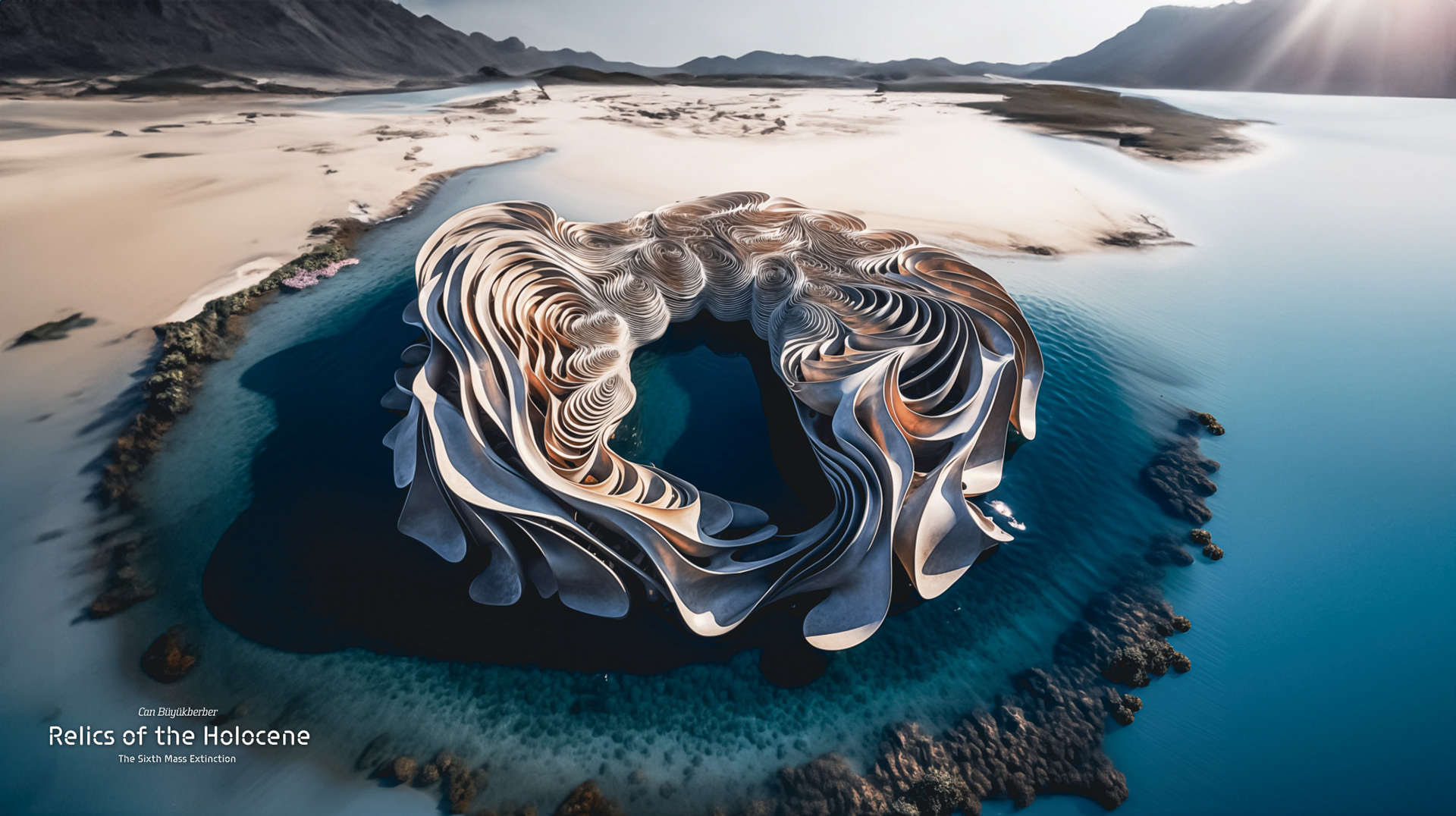
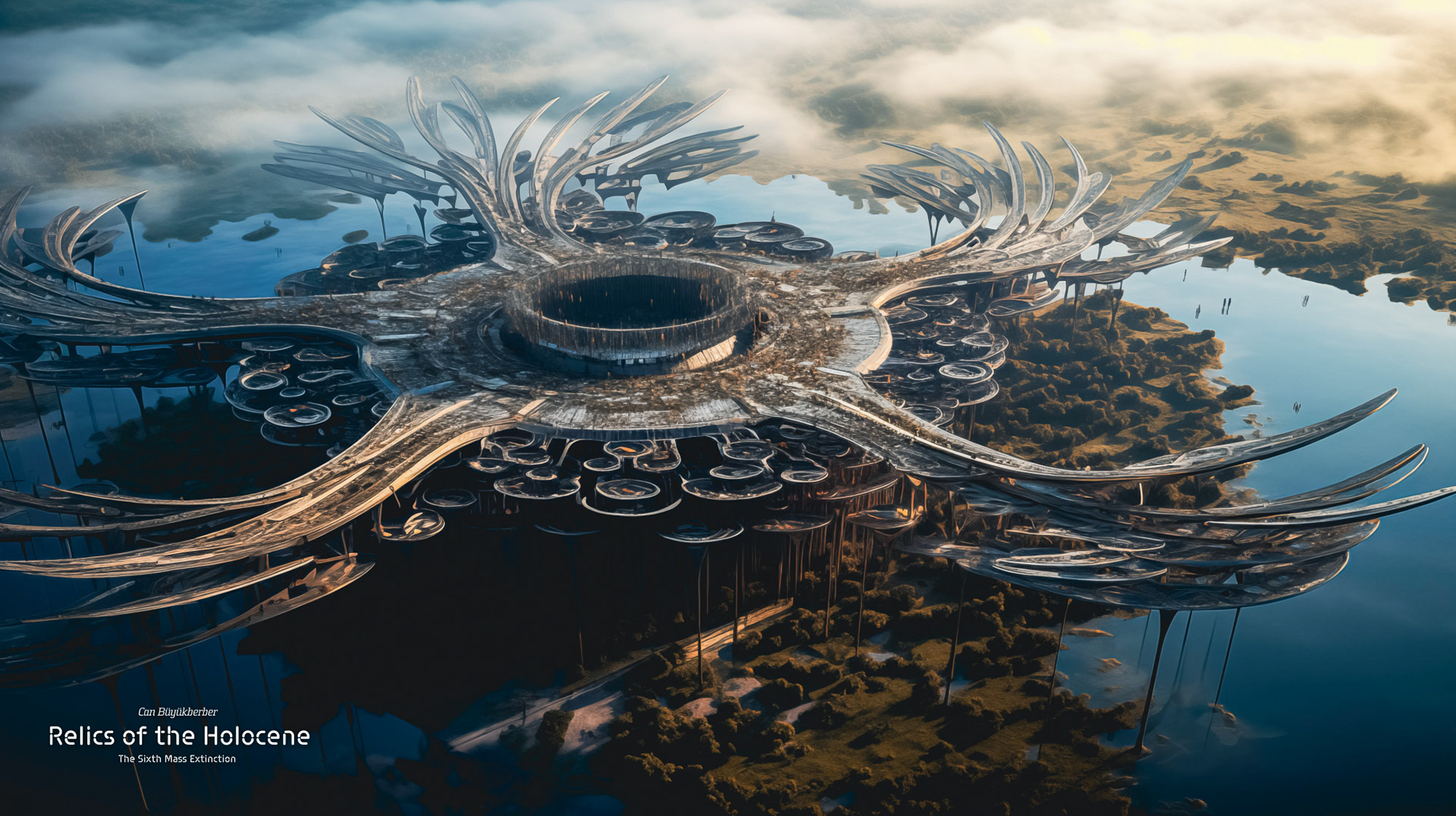
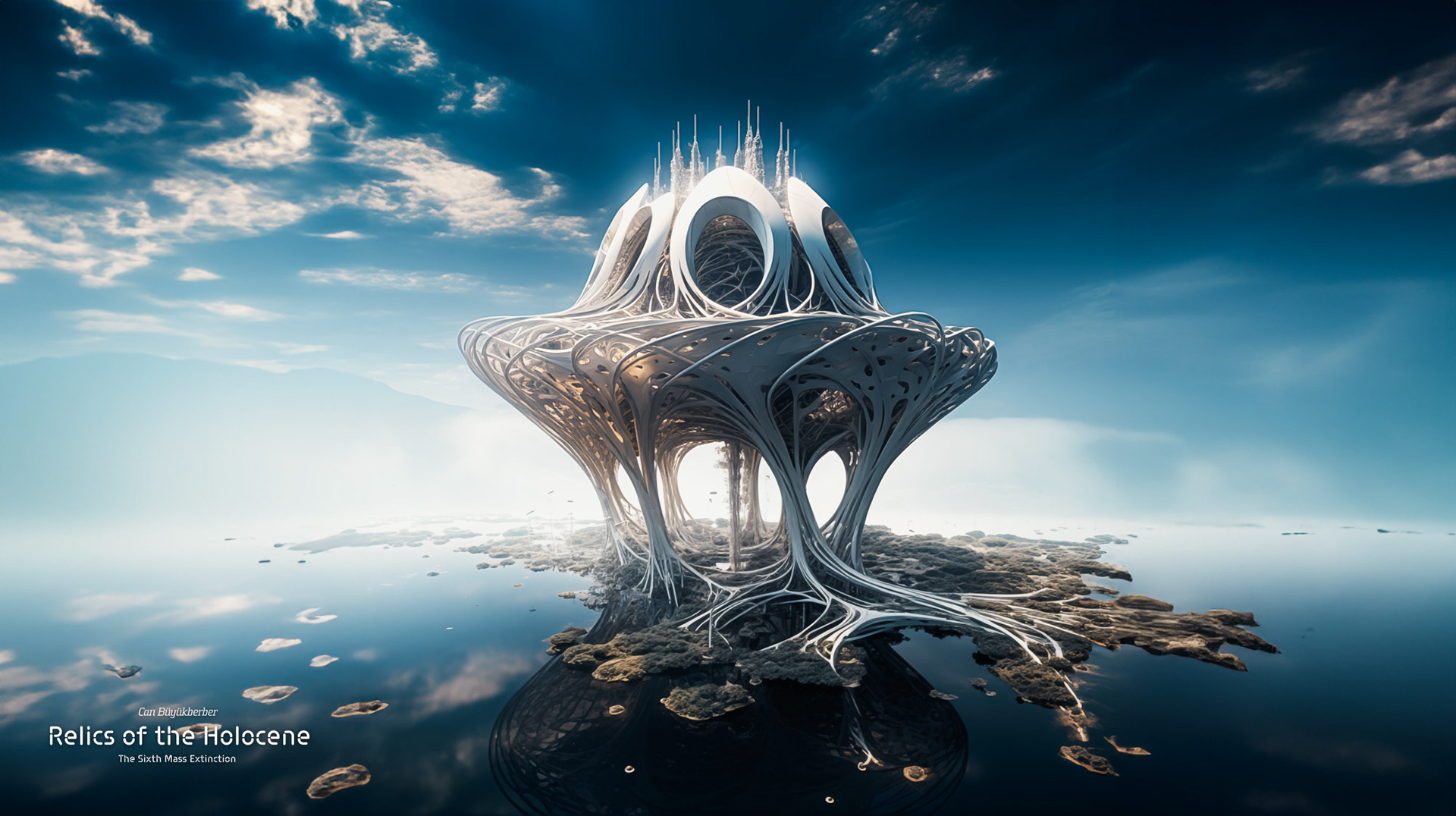




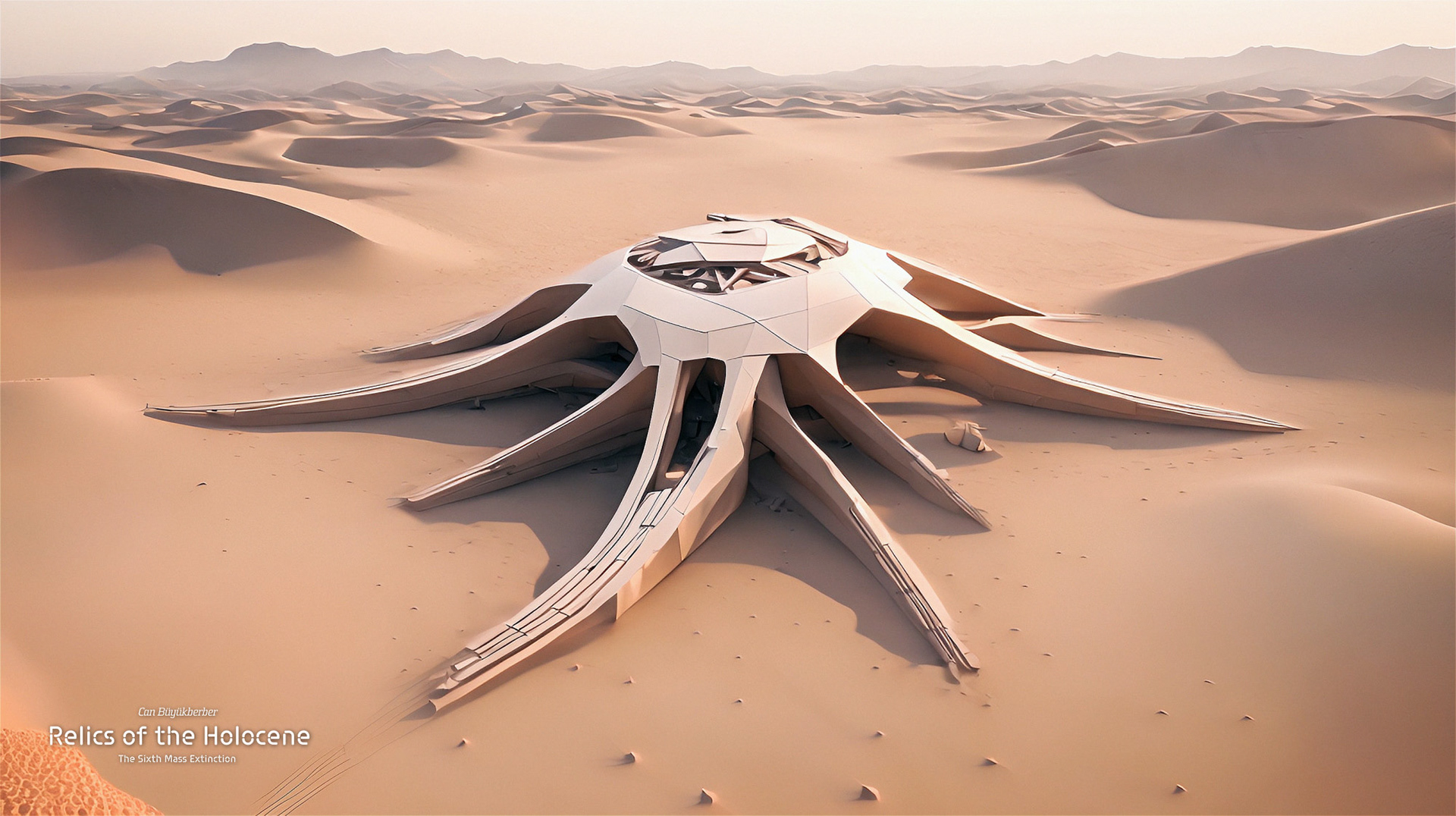

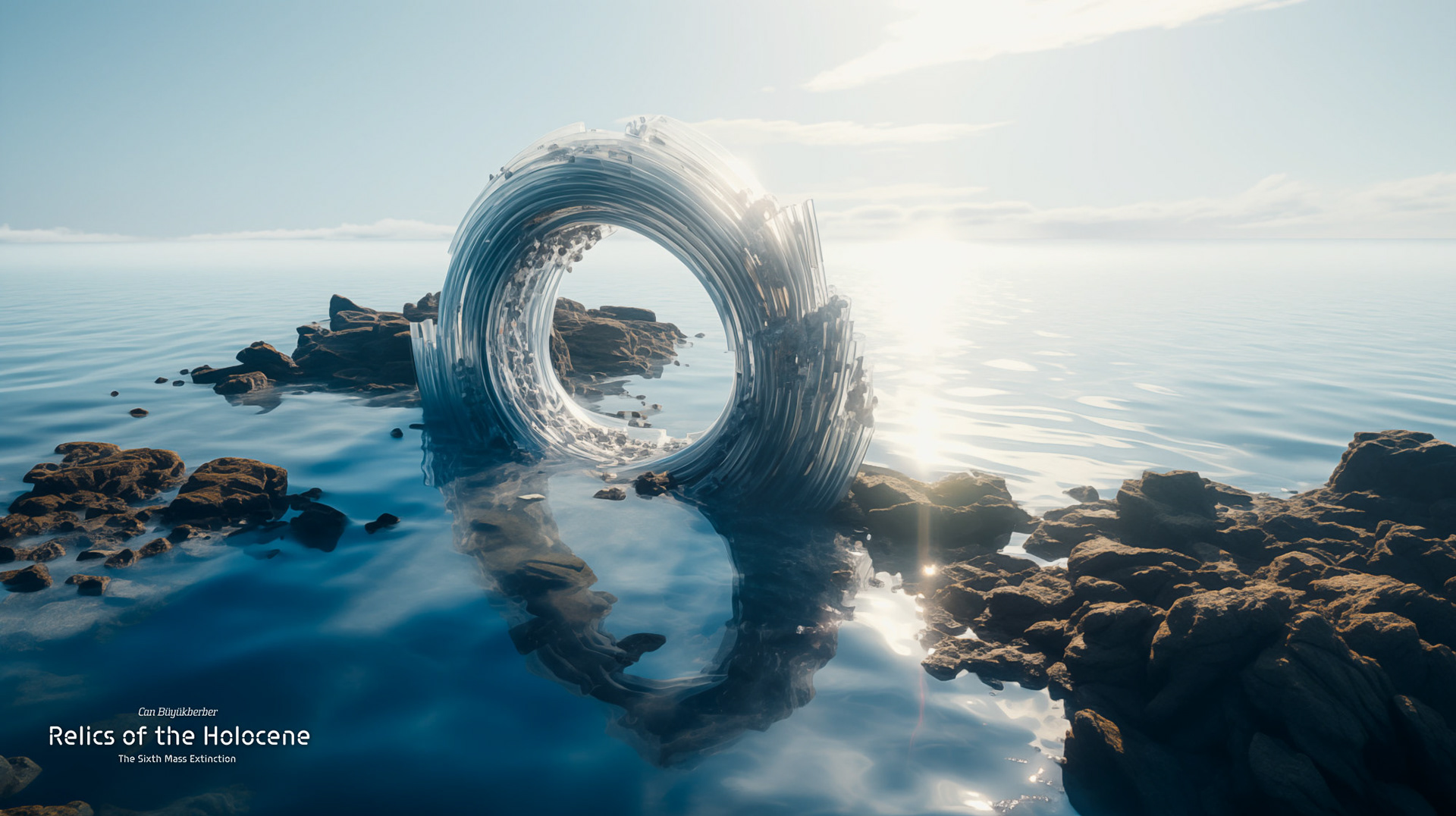
instagram.com/cbuyukberber/
facebook.com/cbuyukberber
twitter.com/cbuyukberber
“Relics of the Holocene” is a Generative A.I. Experiment for Immersive Environments by Can Buyukberber that explores the sixth mass extinction—a pivotal epoch marked by a catastrophic decline in global biodiversity. The piece focuses on the interplay between humanity’s activities and the intricate web of life on our planet. In its thematic core, the project delves into the profound ramifications of anthropogenic influences, moving beyond the immediate implications to underscore the enduring consequences of human actions on Earth’s ecosystems. By navigating the realms of generative artificial intelligence, “Relics of the Holocene” seeks to captivate audiences through immersive experiences and also serves as a commentary on the urgent need for environmental stewardship.










